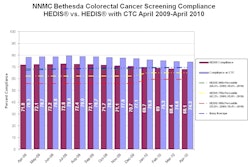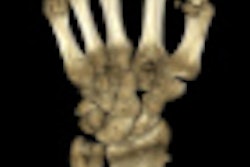Presenter Juan Carlos Ramirez Giraldo will describe how the GABI filter was employed only in the temporal dimension (not x, y, or z directions) to reduce noise and, therefore, the radiation dose required.
The strength of noise reduction was controlled using temporal distance, CT attenuation, and a nonlocal gradient parameter to modulate the strength of the filter. Gradient weighting preserved the shape of the time-attenuation curve by reducing filter strength for voxels with large signal changes versus baseline levels (i.e., for strong contrast enhancement), according to the authors.
The method was tested using three whole-brain CT perfusion datasets acquired with a 4D spiral protocol, to demonstrate the effectiveness of the filter. Half-dose and quarter-dose scans were simulated to create noisy images for comparison.
GABI filtration of simulated 75-mGy CT brain perfusion scans delivered comparable image quality and quantitative measures compared to standard 300-mGy images, the team concluded. Cutting the dose required for brain perfusion imaging could permit wider use of perfusion scans when needed, while reducing the risk of skin injury from repeat scans.



















